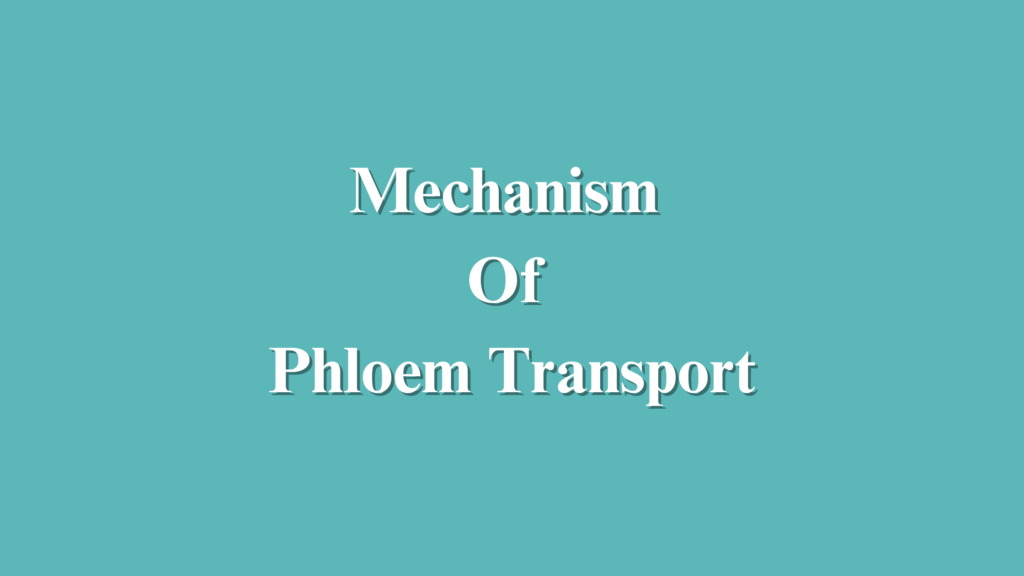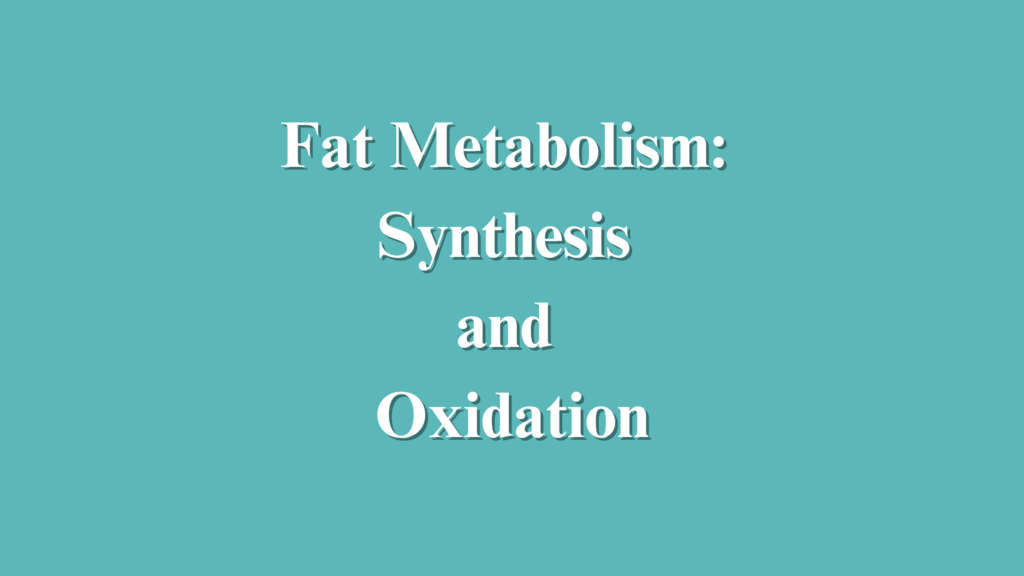No plant that is differentiated into roots, stems, and leaves can ever exist without some active means of translocating materials from one part to another. It is clear that understanding the transport system operating the mechanism of transport and the factors influencing the rate as well as the direction of transport are of immense importance to physiologists.
Types of Translocation of Solutes
Translocation of solutes can be classified into two, translocation of organic and inorganic solutes.
The movement of organic food materials or solutes in soluble form from one place to another in higher plants is called translocation of organic solutes. This translocation of organic solutes is essential in higher plants because only green parts can manufacture food and it must be supplied to other non-green parts for consumption and also for storage.
Until 1920, it was believed that the upward moving solutes are carried through phloem. Curtis (1920) suggested that both the upward and downward transport of sugars probably takes place through the phloem. Dickson believed that upward and downward transport probably takes place through the xylem.
The behaviour of any plant is greatly influenced by the kind, amount, and distribution of various materials in its path. The composition of unicellular plants is largely controlled by the conditions of the environment. However, in more evolved plants that are differentiated into tissues and organs, there is much specialization among various tissues and organs.
The agency which manufactures carbohydrates may be restricted to relatively few cells in the leaves. These cells are not directly exposed to the external environment but are separated by the epidermal cells that do not carry out photosynthesis.
These cells do not absorb water and salts directly from a bathing solution but these come from other cells in the root, located far away from leaves. Root cells that absorb water and salts from the environment cannot synthesize organic compounds. They depend on other parts of the plants that synthesize them.
During germination of seeds, the insoluble reserve food materials of seeds are converted into soluble form and are supplied to the growing regions, until it has developed its own photosynthetic system, ie, leaves. Translocation of organic solutes always takes place from a region of higher concentration of soluble form, ie, supply end, to the region of lower concentration, ie, consumption end.
Translocation Of Organic Solutes
There are three types of translocation for organic solutes.
Upward Translocation of Organic Solutes
Upward translocation of organic solutes to the growing parts and other storage regions. For a long period, it was believed that the upward translocation of food materials occurred through the xylem along with the transpiration stream. This was based on the following evidence.
- Dixon found that in sugar Maple trees, the xylem contains plenty of sugar.
- Anderson found that a high concentration of sugar was present in the xylem sap of pear trees.
- The xylem sap of many woody plants contains appreciable amounts of sugar, amino acids and proteins besides the mineral salts. Dyes injected into the xylem have been found to move upwards in the xylem.
This indicates that sugar and such organic materials are moved to the upper region of the plants through the xylem. But Curtis thought that the upward movement of organic food takes place through phloem. He conducted a ringing experiment to prove this.
He removed the phloem region from a small portion of the woody plant so that phloem continuity was broken for about an inch in length. This helped him find that the upper regions of the plant were short of organic food. Since there was no upward movement of organic solutes from the basal region due to the removal of phloem. This shows that the phloem is responsible for the upward movement of organic solutes.
Radial Translocation of Organic Solutes
Radial translocation of organic solutes from the pith to its cortex. This type of movement of organic food materials takes place through the medullary rays.
Downward Translocation of Organic Solutes
Downward translocation of organic solutes from the leaves to the stem and roots, for both consumption and storage. This type of translocation happens through phloem.
The primary channel for downward organic translocation is the phloem tissue, but there may be exceptions to this generalization. The longitudinal conduction in phloem undoubtedly occurs through sieve elements since sieve elements alone are universally present. The following evidence supports this view.
Elimination of Other Tissues
The Ascent of sap takes place through the xylem so naturally, organic solutes are not translocated through it. The cells of ground tissue are structurally neither suitable for translocation nor do they contain soluble organic solutes which could be translocated. These cells usually have organic solutes in an insoluble form. Cells of ground tissue have only very small lengths so they are not suited for longitudinal translocation. This leaves the phloem as the only possible tissue.
Structure and Distribution of Phloem
The end-to-end arrangement of sieve tubes in phloem whose cross walls are perforated by sieve pores forms a continuous channel and is best suited for translocation. Further, in Cucurbits where the leaves are usually larger, the stem contains bicollateral vascular bundles to cope with rapid translocation of food material through it. The amount of phloem is proportional to the need for translocation.
Blocking of Phloem
Translocation of food materials stops when sieve pores are clogged due to the deposition of callose. A similar effect is produced when the phloem is injured or blocked due to disease.
Isotopic Studies
It has been observed that if a leaf of the plant is allowed to photosynthesize in the presence of labelled C13O2, the translocation of carbohydrates labelled with a C13 isotope takes place through the phloem. But if some segments of the stem, including the phloem, are killed by hot wax, no movement of carbohydrates would be detected.
Ring Experiment
If a ring of bark including phloem is removed from the stem of a plant, the downward translocation of food materials stops and food materials accumulate just above the ring. As a result, after some time tissues above the ring swell and may even develop adventitious roots while the lower parts below the ring portion develop signs of starvation and gradually dry up.
Translocation Of Inorganic Solutes
It is believed that inorganic salts move upwards through the xylem along with the transpiration stream. The presence of mineral salts in the xylem sap exudes during bleeding in guttation plants in that direction. The works of Mason and Maskel proved that the ringing up of phloem did not interfere with the upward mount of minerals whereas the interference of xylem greatly reduced such elements.
It is obvious from many experiments that the upward movement of mineral salts took place at a relatively rapid rate through the xylem. As the ions pass upwards in the xylem,
- A portion will diffuse laterally into the cambium and phloem.
- Another portion will flow laterally via rays into actively metabolizing cells.
- A portion will move into leaves along with the transpiration stream.
- Another portion will move into actively metabolizing enzymes.
Thus the upward translocation of mineral salts occurs in the xylem. A part of the upward movement of minerals may take place also in the phloem under certain circumstances. It is also probable that as long as the minerals are in the inorganic form, they move upwards in the xylem and when they are converted into organic form, their route alters.
Dissolved mineral salts or organic solutes when present are carried along an ascending stream of water in the xylem which is pulled up through the plant. During the upward translocation, some of the solutes are lost by lateral movement into living cells of the stem adjacent to the xylem tubes.
In the leaves, the solutes of xylem vessels migrate into living cells of mesophyll. The rate at which the solutes are translocated upward through the xylem of the stem will correspond with the rate of translocation of water.
Formerly, it was thought that the upward movement of solutes takes place along with water in the xylem and downwards through the phloem. Today this view is not held rigidly. It is now widely accepted that organic materials are conducted through phloem and inorganic solutes through the xylem. Some lateral transport of solute can also occur. However, the process is very slow and insignificant.
Apoplast and Symplast
The two terms, apoplast and symplast were used by Munch in 1930 to explain the flow of water and minerals in plants.

Apoplast
He used the term apoplast for the non-living or dead portions of plants like the interconnecting cell walls, intercellular spaces, cell walls of endodermal cells, excluding Casparian strips, cell walls of pericycle, xylem tracheids and vessels. All these non-living portions constitute a single system called apoplast. This system is continuous throughout the plant. The water moves through the system chiefly due to capillary action or free diffusion along the gradient.

Symplast
Symplasts connect living portions of plants, such as the cytoplasm of all living cells, through plasmodesmata present in cell walls. Since only the living system is included in a symplast, water moves chiefly through osmosis.




